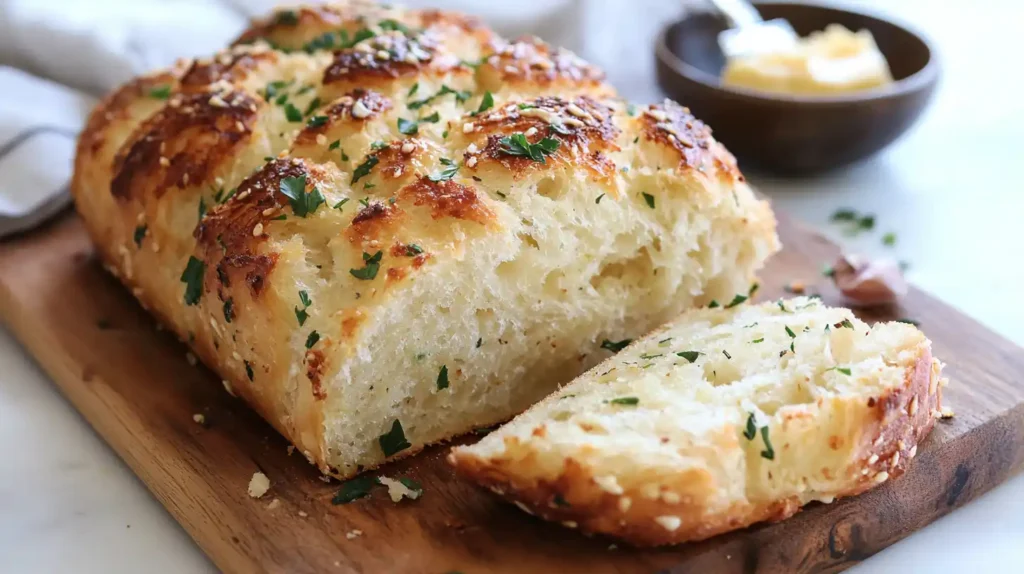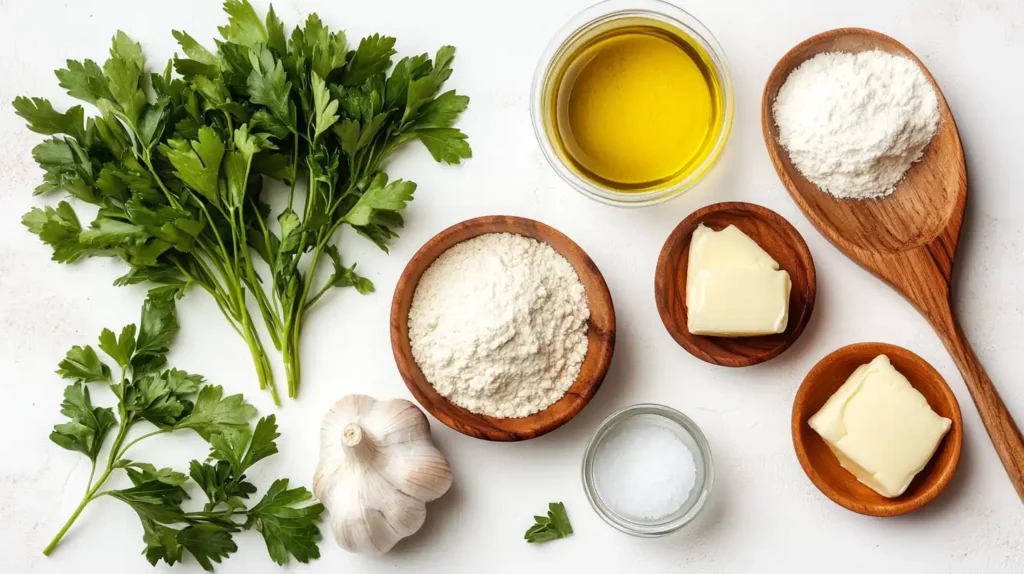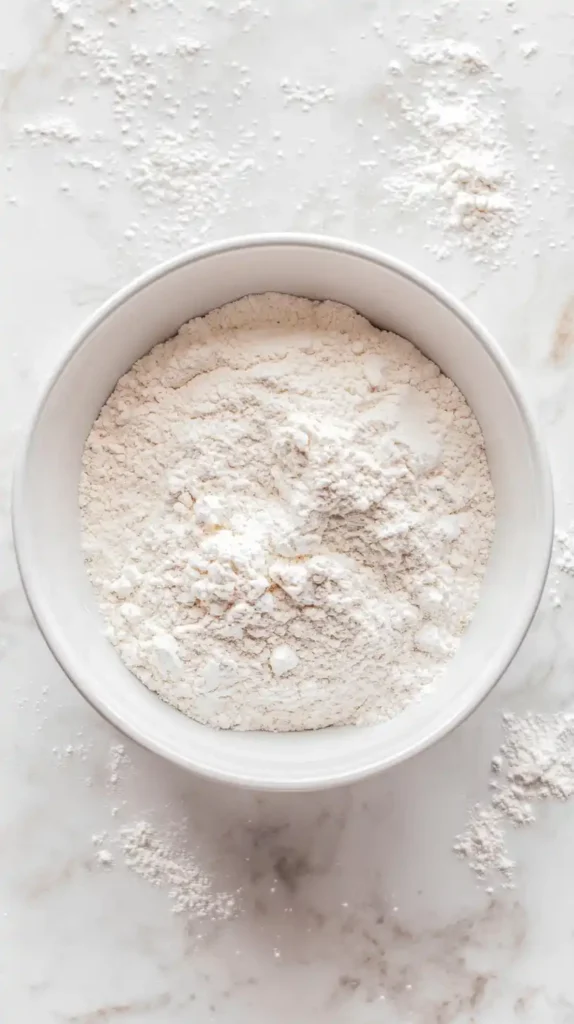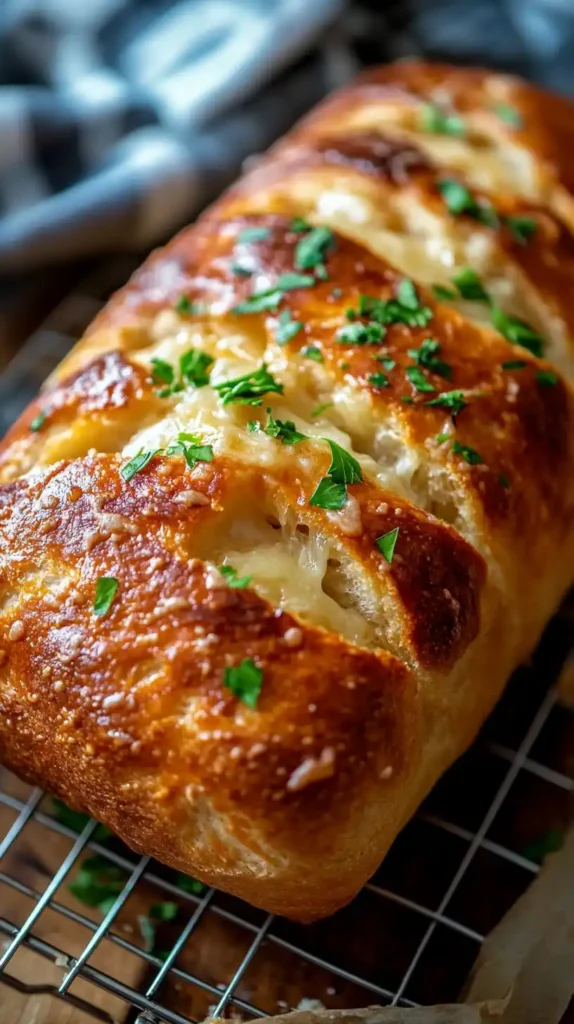Making garlic bread without yeast offers a quick, hassle-free alternative to the traditional method. Without the need for rising time, it’s perfect for when you’re short on time or want a simpler recipe. This version also tends to be lighter and softer, offering a satisfying, crispy texture without the density that yeast often adds. Additionally, it’s ideal for those who may have dietary restrictions or prefer avoiding yeast-based ingredients while still enjoying delicious, homemade garlic bread.

Key Ingredients for No-Yeast Garlic Bread
Making garlic bread without yeast requires a few simple ingredients that come together to create a flavorful dish. Here are the essential components:
- All-purpose flour – The base for the dough, providing structure and a soft, light texture.
- Baking powder – This acts as the leavening agent, helping the bread rise without the need for yeast.
- Salt – A pinch of salt enhances the flavor, balancing the richness of the garlic butter.
- Sugar – A small amount of sugar helps to give a slightly sweet undertone, complementing the savory garlic.
- Butter – The fat in the recipe that gives garlic bread its characteristic richness and soft crumb.
- Garlic – Fresh minced garlic is a must for that signature flavor, making your garlic bread irresistible.
- Parsley – Chopped fresh parsley adds a touch of color and freshness, complementing the garlic’s boldness.
- Milk – Used to bind the dough and give it moisture for a soft texture.
- Olive oil – For brushing the top of the bread, ensuring a golden, crispy finish.
These ingredients combine to make a simple yet delicious garlic bread that doesn’t require yeast, perfect for a quick snack or side dish.

Step-by-Step Guide to Making Yeast-Free Garlic Bread
Making garlic bread without yeast is quick and simple. Follow these steps to create a perfect batch:
- Preheat the oven: Set your oven to 375°F (190°C) to ensure it’s ready to bake.
- Prepare the dough: In a large bowl, combine all-purpose flour, baking powder, salt, and sugar. Mix thoroughly.
- Add wet ingredients: Pour in the milk and melted butter, then stir until the dough comes together. If it’s too sticky, add a little more flour.
- Shape the dough: Turn the dough onto a floured surface and gently knead until smooth. Roll it out into a rectangular shape, about 1 inch thick.
- Prepare the garlic butter: In a small bowl, mix together softened butter, minced garlic, and chopped parsley.
- Spread the garlic butter: Evenly spread the garlic butter mixture over the surface of the dough.
- Bake: Transfer the dough to a baking sheet and bake for 20-25 minutes, or until golden brown.
- Serve: Once baked, slice the garlic bread and serve warm.
This simple recipe creates a delicious garlic bread without any yeast, perfect for any meal!



Best Flour Alternatives for No-Yeast Garlic Bread
When making garlic bread without yeast, you can experiment with various flour alternatives to match dietary needs or personal preferences. Here are some options:
- Almond flour: A great gluten-free choice, almond flour adds moisture and a slight nutty flavor to your bread. It produces a denser texture, so you may need to adjust the amount of liquid.
- Coconut flour: Another gluten-free option, coconut flour absorbs more liquid than regular flour. You’ll need to increase the moisture and possibly add a binding agent like eggs.
- Whole wheat flour: For a heartier, more nutritious version, whole wheat flour can replace all-purpose flour. It gives the bread a slightly denser texture and a mild, earthy taste.
- Rice flour: Ideal for gluten-free diets, rice flour makes a light and soft bread. It works well when mixed with other gluten-free flours for better texture.
- Oat flour: Made from ground oats, oat flour offers a mild flavor and a slightly chewy texture. It’s easy to make at home by blending rolled oats into a fine powder.
These flour alternatives provide varied textures and flavors, allowing you to create garlic bread without yeast to suit your needs.
How to Achieve a Fluffy Texture Without Yeast
Achieving a fluffy texture without yeast is possible by focusing on the right ingredients and techniques. Here are a few tips:
- Use baking powder: Instead of yeast, baking powder works as a leavening agent, helping the dough rise and become light. Ensure the baking powder is fresh for best results.
- Add plenty of moisture: A higher liquid-to-flour ratio helps create a soft, airy texture. Consider adding milk or buttermilk for extra softness.
- Incorporate butter or oil: Fats like butter or olive oil contribute to the dough’s tenderness and help maintain a soft crumb, making it light and fluffy.
- Don’t overmix the dough: Overworking the dough can lead to a dense texture. Mix just until the ingredients come together, leaving some lumps.
- Use a gentle touch when shaping: Press and shape the dough lightly to maintain air pockets inside, preventing it from becoming too compact.
- Bake at the right temperature: A hot oven helps the dough rise quickly, creating a fluffy texture without the need for yeast.
By focusing on these methods, you can create garlic bread without yeast that’s both light and soft.
Quick and Easy Garlic Butter Recipe
A simple garlic butter recipe can bring your garlic bread without yeast to life with minimal effort. Here’s how to make it:
- Ingredients:
- 1/2 cup (1 stick) unsalted butter, softened
- 3-4 cloves garlic, minced
- 1 tablespoon fresh parsley, chopped
- 1/2 teaspoon salt (adjust to taste)
- Optional: 1/2 teaspoon of grated Parmesan cheese for extra flavor
- Instructions:
- In a small bowl, combine the softened butter with minced garlic and chopped parsley.
- Mix well until the garlic is evenly distributed.
- Add salt to taste and stir again. For an added depth of flavor, you can sprinkle in some grated Parmesan cheese.
- If you prefer a smooth consistency, you can use a hand mixer to blend the ingredients together.
- Serve:
- Spread the garlic butter generously on your no-yeast garlic bread, toast it, and enjoy the rich, savory taste!
This garlic butter is easy to prepare, requiring just a few minutes of your time, and it’s the perfect complement to a quick batch of garlic bread without yeast.
Baking Methods: Oven vs. Stovetop vs. Air Fryer
When making garlic bread without yeast, choosing the right baking method can impact the final result. Here’s a comparison of three popular methods:
- Oven: The oven is the most traditional method for baking garlic bread without yeast. It offers even heat distribution, ensuring a golden, crispy exterior and a soft, fluffy interior. Preheating the oven to 375°F (190°C) and baking for 20-25 minutes delivers consistent results.
- Stovetop: For a quicker, more hands-on approach, a stovetop is a great option. Using a skillet, you can cook the bread on medium heat, covering the pan to trap steam. This method gives you a crisp bottom with a soft top, but it may require more attention to avoid burning.
- Air Fryer: The air fryer is perfect for those who want a faster cooking time and a crispier crust. Preheat the air fryer to 350°F (175°C) and cook for 8-10 minutes. This method gives a crunchy exterior while keeping the bread moist inside, making it a great choice for a quick snack.
Each method offers distinct benefits, so you can choose the one that best suits your preferences and time constraints.
Pairing Ideas: What to Serve with Garlic Bread
Garlic bread without yeast is a versatile side that pairs well with a variety of dishes. Here are some ideas to complete your meal:
- Pasta: Classic garlic bread goes wonderfully with pasta dishes, like spaghetti Bolognese, fettuccine Alfredo, or a simple marinara. The bread soaks up the sauce, adding a satisfying element to each bite.
- Salads: A light, fresh salad balances the richness of garlic bread. Try a Caesar salad, Greek salad, or mixed greens with a tangy vinaigrette to provide a refreshing contrast.
- Soup: Pairing garlic bread with hearty soups like tomato basil, minestrone, or creamy potato adds texture and flavor. The bread is perfect for dipping into the soup, making each bite even more enjoyable.
- Stews and Roasts: Serve garlic bread alongside savory stews, roasted vegetables, or grilled meats like chicken or steak. The bread complements the robust flavors and provides a satisfying accompaniment.
- Cheese Platter: For a casual appetizer or snack, pair garlic bread with a variety of cheeses, olives, and cured meats for a delightful spread.
If you’re looking for a quick and easy garlic bread recipe without yeast, you’re in the right place! This method ensures a soft and flavorful bread that pairs perfectly with pastas, soups, or as a stand-alone snack. Check out our detailed garlic bread without yeast recipe for a step-by-step guide!
These pairing ideas will make your garlic bread without yeast an essential part of any meal.
Common Mistakes and How to Avoid Them
When making garlic bread without yeast, a few common mistakes can affect the outcome. Here’s how to avoid them:
- Overmixing the dough: Overworking the dough can lead to a dense texture. Mix just until the ingredients come together, leaving the dough slightly lumpy.
- Not measuring ingredients properly: Incorrect measurements of flour or liquid can make the dough too dry or too sticky. Always use a proper measuring cup, especially for flour.
- Skipping the resting time: While this recipe doesn’t require yeast, allowing the dough to rest for 10-15 minutes can improve the texture. It gives the flour time to fully hydrate and allows the dough to firm up.
- Using cold butter: Cold butter can make it harder to mix into the dough. Make sure your butter is softened to room temperature for a smooth, easy blend.
- Underbaking or overbaking: Keep a close eye on the garlic bread while baking. Underbaking results in a doughy texture, while overbaking can cause it to become too hard. Aim for a golden brown crust.
By being mindful of these tips, you can avoid these common mistakes and make perfect garlic bread without yeast every time.
Frequently Asked Questions About Yeast-Free Garlic Bread
Yes, you can prepare the dough in advance and refrigerate it for up to 24 hours. After refrigeration, let the dough rest at room temperature for 10-15 minutes before baking.
To achieve a crispy crust, brush the bread with olive oil or melted butter before baking. You can also bake it at a slightly higher temperature, around 400°F (200°C), for a few extra minutes.
Absolutely! Once baked and cooled, wrap the garlic bread tightly in plastic wrap or foil, then place it in a freezer bag. It can be stored in the freezer for up to 3 months. To reheat, simply toast it in the oven or air fryer.
Yes, you can substitute the all-purpose flour with a gluten-free flour blend. Be sure to check the packaging for any additional ingredients that may be needed, such as xanthan gum, for better texture and binding.

1 thought on “Quick Garlic Bread Recipes Without Yeast Recipe”